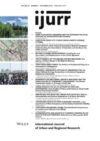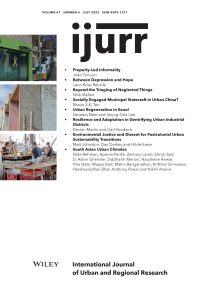What is the relationship between top-down governance reform and place-based participatory and deliberative spaces? In this article I argue that in Toronto, an urban system of public participation and deliberation is intimately interwoven into partisan scalar restructuring processes, as well as enduring tensions over the ways and means by which the public can have authoritative input on solving local issues. Regardless of top-down political manoeuvring, the public mobilizes in various spaces across the city, but the urban system remains disconnected and geared towards triaging. This means that the public must work autonomously across the city and within the crevices of city processes, prioritizing how to make gains on issues that they feel are important. I discuss how to move beyond this by building on deliberative systems theory and findings from interviews with local city staff and residents, and through an analysis of public deputations at the official Special Committee on Governance. Ultimately, there is a need for spatially integrated opportunities for more people to come together and assemble in different ways. Some of these will align with autonomous activities, some are liminal and woven within institutional partners, and others are more about geographical bridge building.

